

— Blogs —
—Products—
 Consumer hotline +8618073152920
Consumer hotline +8618073152920 WhatsApp:+8615367865107
Address:Room 102, District D, Houhu Industrial Park, Yuelu District, Changsha City, Hunan Province, China
Product knowledge
Time:2024-10-27 16:40:51 Popularity:1100
Automatic Weather Station (AWS) is a highly integrated, low-power, quick-to-install, high-precision weather observation device for field monitoring. It is capable of automatically detecting multiple weather elements in an area as needed, generating reports automatically without human intervention, and transmitting the detection data to the central station at regular intervals. These data are an important means to make up for the blank meteorological detection data in the space region.
Automatic meteorological observation station is usually composed of the following parts:
- Temperature sensor: Measures air temperature.
- Humidity sensor: Measurement of relative humidity.
- Wind Speed and Direction Sensor: Measures wind speed and direction.
- Barometric Sensor: Measures atmospheric pressure.
- Precipitation Sensor: Measures the amount of rainfall and can be a rain gauge or an optical rain sensor.
- Solar Radiation Sensor: Measures solar radiation and earth radiation.
- Soil Moisture Sensor: Measures soil moisture content.
- Other sensors: may include UV sensors, PAR sensors, visibility sensors, light intensity sensors, etc.
- Responsible for receiving signals from sensors, and processing and storing data.
- Usually has the ability to store, process and initially analyze data.
- Transmits data through wired or wireless means (e.g. satellite, radio, GPRS/45/5G, Internet, etc.).
- Usually consists of solar panels, wind turbines and/or batteries to ensure continuous operation of the observatory.
- For remote areas or places with unstable power grids, a solar power system is very suitable and consists of solar panels, battery packs and charge controllers.
- Stands are used to secure sensors and collectors.
- Protective devices protect the sensors from the natural environment, such as wind, rain, dust and lightning.
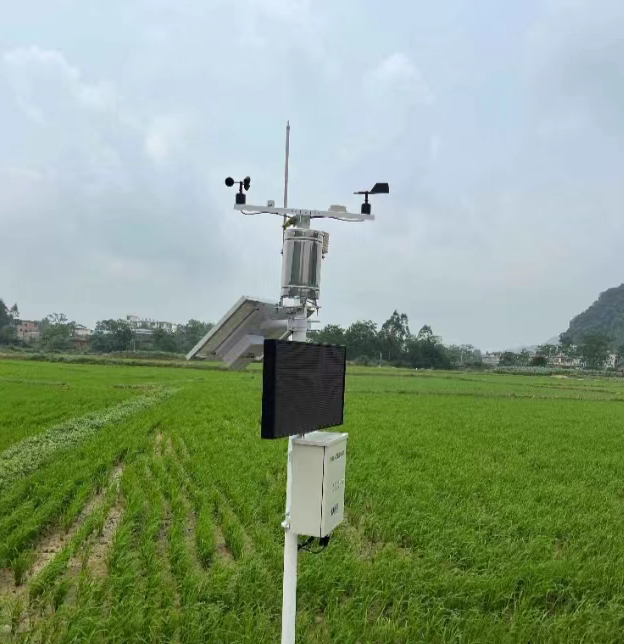
1. Sensor sensing: the sensor senses changes in meteorological elements and converts these changes into electrical signals.
2. Data acquisition and processing: the data collector receives the electrical signals from the sensors and carries out linearization and quantization processing to realize the conversion from engineering quantity to element quantity.
3. Data storage: The data is stored in the memory of the data collector after screening and calibration.
4. Data transmission: The communication module transmits the data to the central station or cloud platform via wireless communication technology (e.g. 3G/4G/5G, Wi-Fi, etc.).
5. Remote access: Users can access these data remotely through computers or mobile devices and perform statistical analysis and processing.
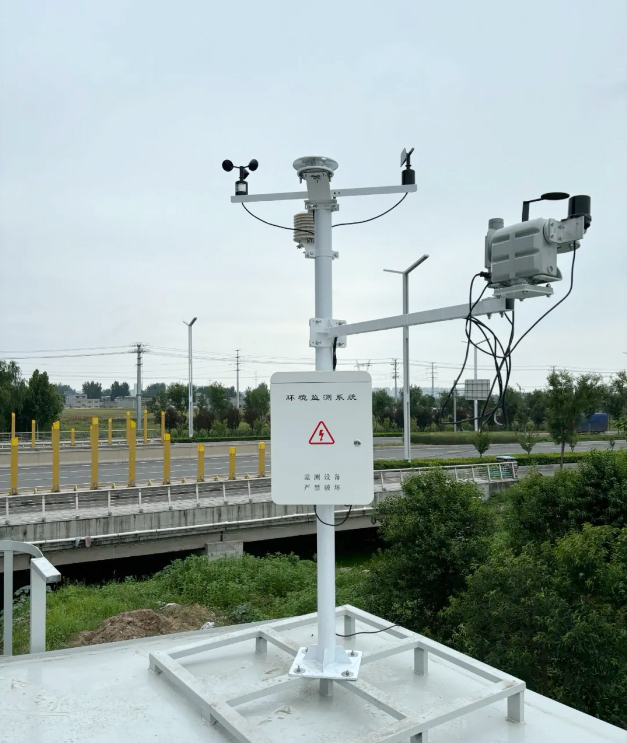
The parameters usually measured by the automatic weather observation station include:
- Temperature: Physical quantity reflecting the degree of hot and cold air, usually recorded in degrees Celsius (℃).
- Humidity: the amount of water vapor in the air, usually expressed as a percentage of relative humidity (%).
- Barometric pressure: the force of atmospheric pressure per unit area, usually recorded in hectopascal (hPa).
- Wind speed: the speed of air flow, usually recorded in meters per second (m/s) or kilometers per hour (km/h).
- Wind direction: the direction in which the wind is blowing, usually expressed in terms of geographical position (e.g., north, southeast, etc.) or degrees (°).
- Precipitation: the amount of water falling in a unit of time, including rain, snow, shrapnel, etc., usually recorded in millimeters (mm).
- Solar Radiation: refers to the process by which energy emitted by the sun is radiated to the earth in the form of electromagnetic waves, which helps to assess photovoltaic energy potential, analyze climate change, and predict weather conditions.
- Soil temperature: affects seed germination and root growth.
- Soil moisture: Critical for irrigation and crop water management.
- Evapotranspiration: Used to assess water evaporation and irrigation needs.
- Other parameters: such as visibility, dew point temperature, CO2 concentration, negative oxygen ions, etc.
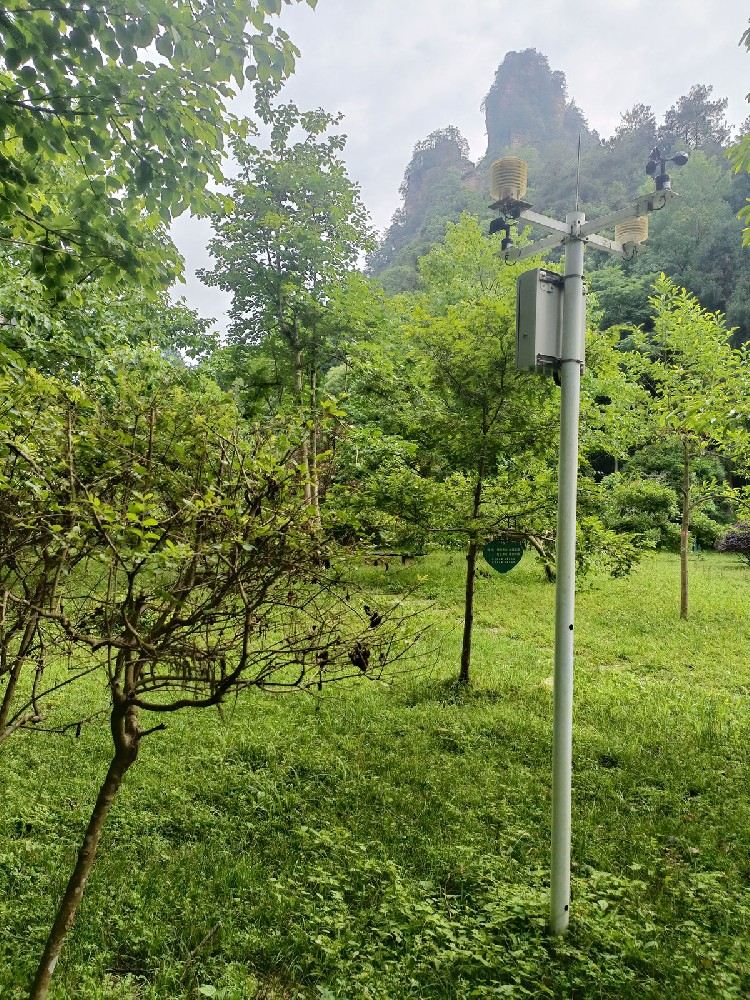
Automatic weather observation stations are widely used in the following fields:
1. meteorology: providing important basis for weather forecasting, climate analysis, meteorological disaster warning, etc.
2. Agriculture: monitoring the climatic conditions of farmland, providing guidance for agricultural production and optimizing crop management, such as irrigation plans, fertilization strategies and pest control.
3. Forestry: Monitoring meteorological elements in the ecological environment and assessing ecological conditions.
4. environmental protection: monitoring environmental parameters such as air quality and precipitation to provide data support for environmental protection.
5. hydrology: monitoring meteorological conditions of rivers, lakes and other waters, providing data for hydrological forecasting and water resource management.
6. military: provide meteorological support for military operations, such as battlefield meteorological forecast, flight meteorological conditions assessment, etc.
7. scientific research: provide meteorological data support for scientific research, such as climate change research and ecosystem research.
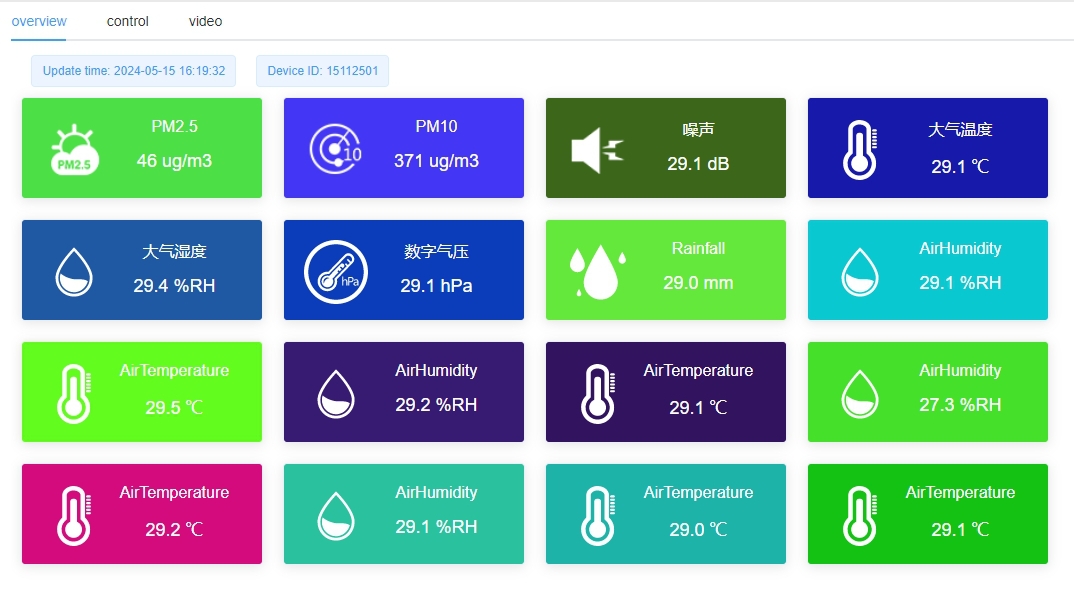
1. High precision: adopting high-precision sensors and data collectors to ensure the accuracy of measurement data.
2. High integration: the equipment is highly integrated, easy to install and carry, suitable for field monitoring.
3. low power consumption: low power consumption design, prolong the service life of the equipment, reduce operating costs.
4. real-time transmission: real-time data transmission through wireless communication technology to ensure the timeliness and effectiveness of data.
5. Remote monitoring: Users can remotely access and monitor the status and data of the equipment through computer or mobile devices.
6. Weatherproof materials: Sensors and housings are typically manufactured using weatherproof materials that are resistant to extreme temperatures, humidity, UV radiation, and chemical corrosion.
7. Protection ratings: Devices are typically designed in accordance with International Protection Codes (IP Codes), such as IP65 or IP66 ratings, to ensure that they are protected against dust and water.
8. Sturdy stand: The stand of an automatic weather station is designed to be sturdy enough to withstand strong winds and possible collisions.
9. Heating system: In cold regions, the sensor may be equipped with a heating system to prevent icing.
10. lightning protection: install lightning rods and grounding systems to protect the equipment.
11. Backup Power: Equipped with a backup power system, such as batteries or solar panels, to ensure continued operation in the event of power outages or extreme weather conditions.
12. Data backup: Data collectors usually have internal storage to ensure data integrity even if the communication system fails temporarily.
The power supply system of automatic weather station usually adopts the following ways:
- Dependent on the local power grid, suitable for areas with stable power supply.
- It is simple and low maintenance cost.
- Suitable for remote areas or places with unstable power grids.
- Includes solar panels, battery packs and charge controllers.
- Environmentally friendly, utilizing renewable energy.
- Highly independent, not affected by the power grid.
- Flexible installation, suitable for remote areas.
- Higher initial investment cost.
- Affected by weather conditions, e.g. continuous cloudy days may lead to insufficient power supply.
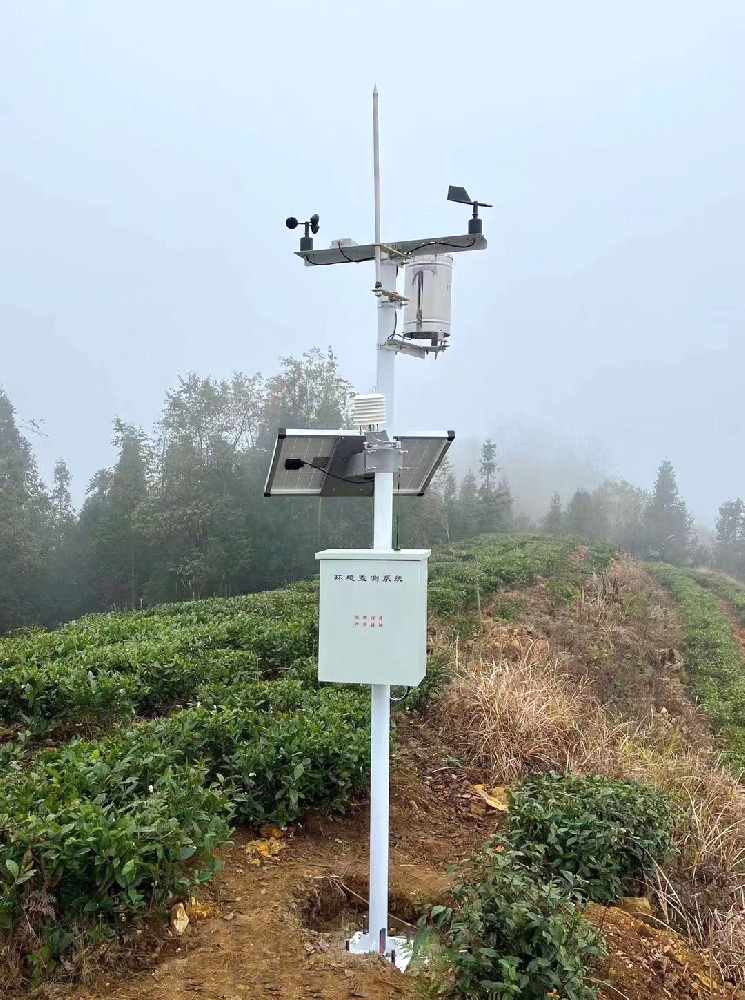
- Wind energy is an optional way of power supply in areas with abundant wind resources.
- Renewable and environmentally friendly.
- Stable power supply in wind resource rich areas.
- High initial investment cost.
- Noise and visual impact may be high.
- Combines solar and wind energy and sometimes includes backup diesel generators to provide a more reliable power supply.
- Suitable for a wide range of environmental conditions to ensure continuous operation.
- Geographical location: Whether it is located in a remote or difficult to connect to the grid.
- Climatic conditions: availability of sufficient sunlight or wind resources.
- Economy: Budget for initial investment and maintenance costs.
- Reliability: the requirement for stability of power supply.
In agrometeorological monitoring, automatic weather stations can provide the following key meteorological parameters:
1. air temperature: monitoring the air temperature, which is critical to the crop growth cycle.
2. Relative humidity: affects crop transpiration and disease incidence.
3. precipitation: has a direct impact on irrigation schedules and crop water requirements.
4. wind speed and direction: affects crop transpiration and the spread of wind-borne diseases.
5. solar radiation: plays an important role in photosynthesis and energy balance of crops.
6. soil temperature: affects seed germination and root growth.
7. soil moisture: critical for irrigation and crop water management.
8. Atmospheric pressure: Although it has less direct impact on crops, it can be used as a reference for weather forecasting.
9. Evapotranspiration: used to assess water evaporation and irrigation needs.
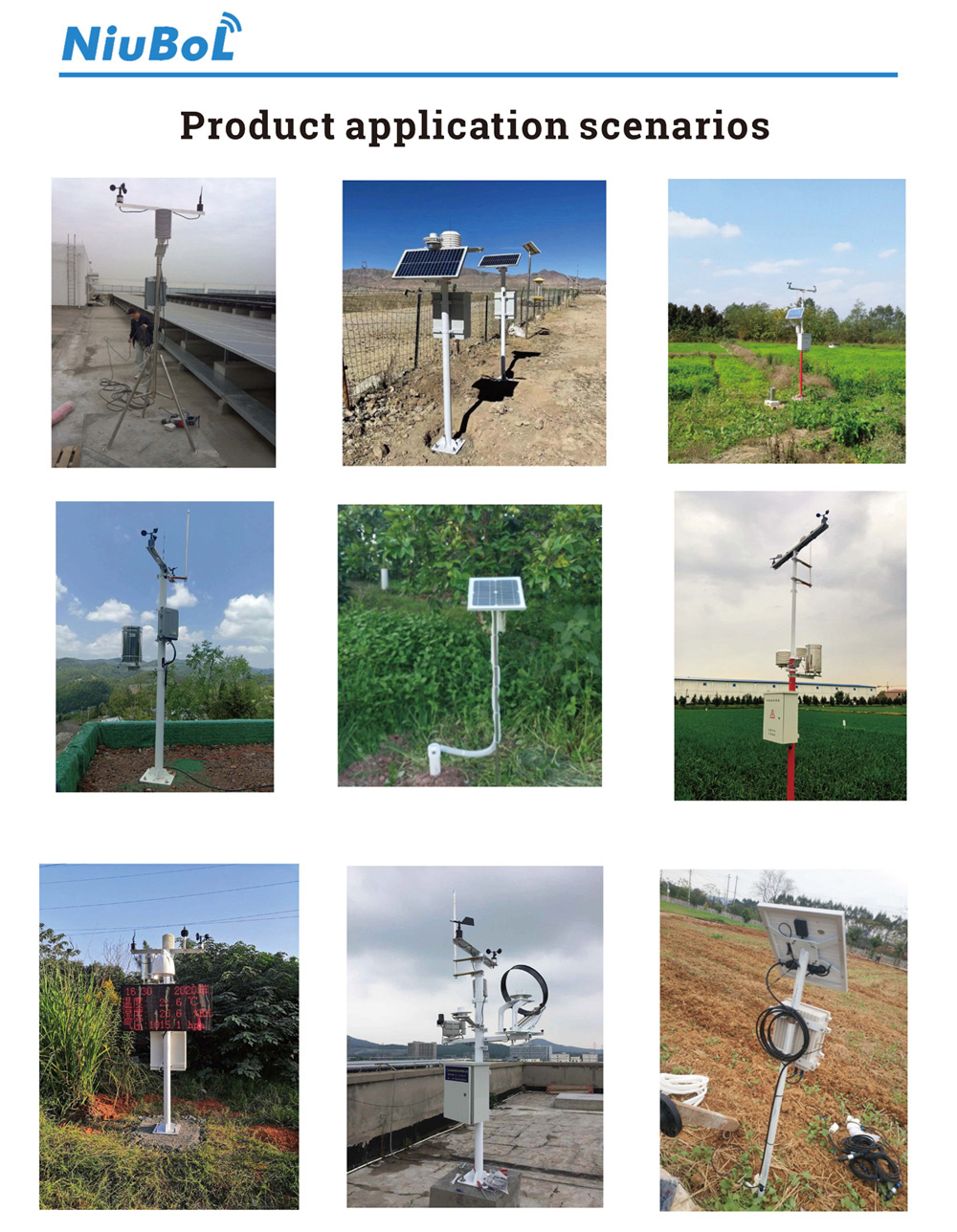
These parameters help agricultural practitioners to better understand and manage the crop growing environment, so as to optimize agricultural management measures such as irrigation, fertilizer application, pest control, etc.
In summary, the automatic weather observation station is a powerful and adaptable weather monitoring equipment with a wide range of applications and important application value. Through intelligentization and automation, it greatly improves the efficiency and application value of meteorological data acquisition. We hope these detailed introductions will be helpful to you! If you have any other questions or need further information, please feel free to contact us.
Related recommendations
Sensors & Weather Stations Catalog
Agriculture Sensors and Weather Stations Catalog-NiuBoL.pdf
Weather Stations Catalog-NiuBoL.pdf
Related products
 Combined air temperature and relative humidity sensor
Combined air temperature and relative humidity sensor Soil Moisture Temperature sensor for irrigation
Soil Moisture Temperature sensor for irrigation Soil pH sensor RS485 soil Testing instrument soil ph meter for agriculture
Soil pH sensor RS485 soil Testing instrument soil ph meter for agriculture Wind Speed sensor Output Modbus/RS485/Analog/0-5V/4-20mA
Wind Speed sensor Output Modbus/RS485/Analog/0-5V/4-20mA Tipping bucket rain gauge for weather monitoring auto rainfall sensor RS485/Outdoor/stainless steel
Tipping bucket rain gauge for weather monitoring auto rainfall sensor RS485/Outdoor/stainless steel Pyranometer Solar Radiation Sensor 4-20mA/RS485
Pyranometer Solar Radiation Sensor 4-20mA/RS485
Screenshot, WhatsApp to identify the QR code
WhatsApp number:+8615367865107
(Click on WhatsApp to copy and add friends)
